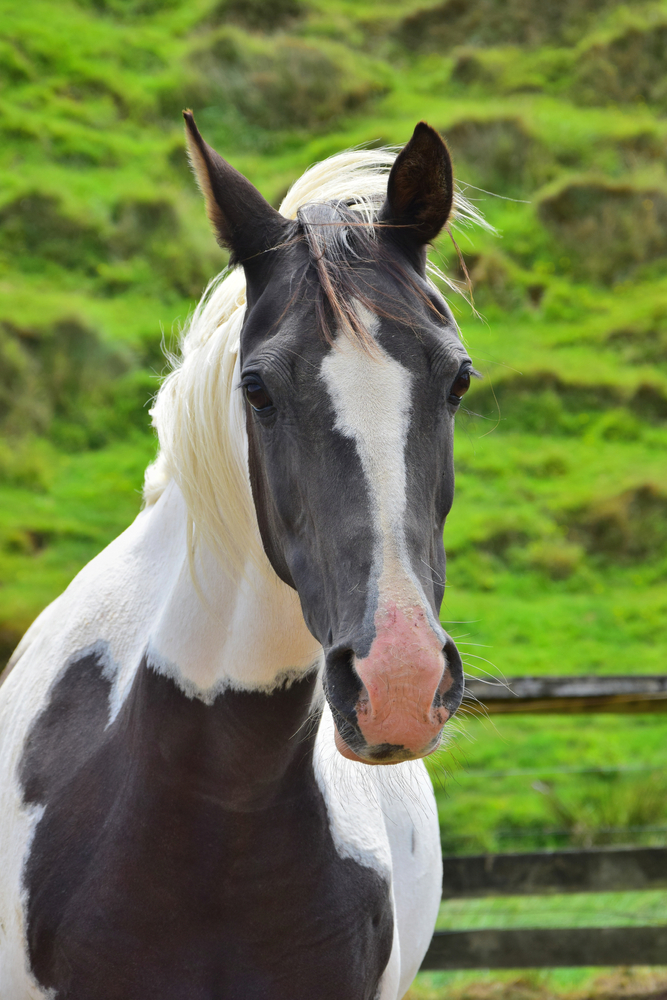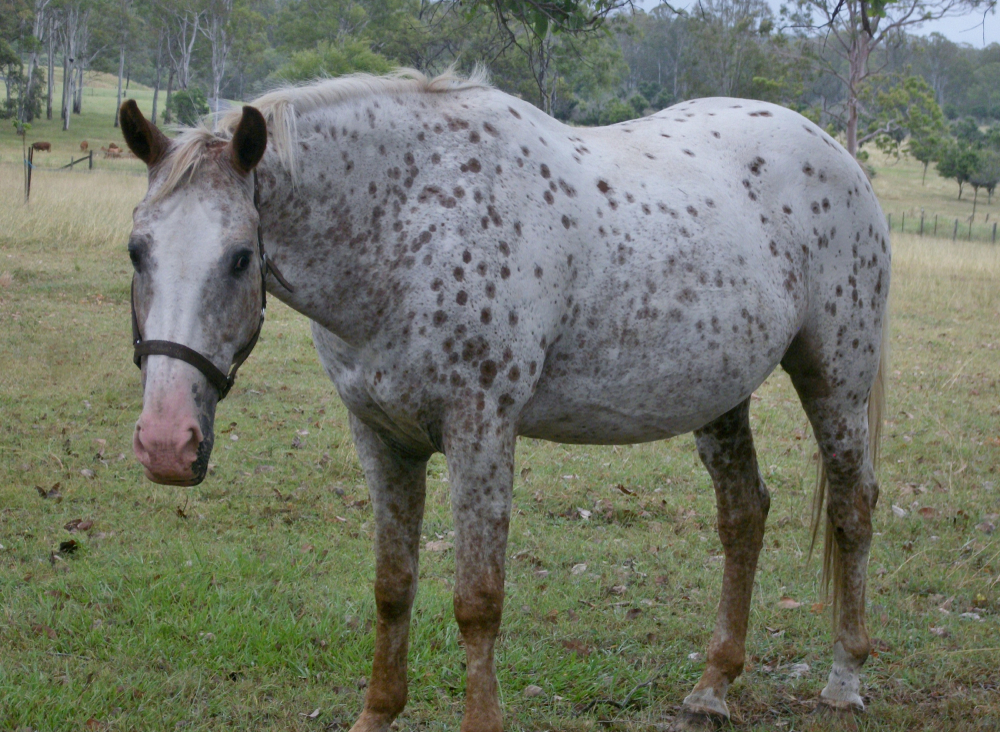Tuesdays with Tony
I am always up for a full day of laying around in the sun. I hear some people even worship the sun. Horses also seem to enjoy a good nap laying out in the middle of the field. Half the time I think they enjoy scaring you into thinking they’re dead, but in reality, they are just enjoying basking in the warm sun. Unfortunately, the sun is not always so nice to your body, and just like it can be harmful to you and your skin, it can also cause irreparable damage to your horse.
With the summer months ahead of us there are many problems that can pop up and plague your horse, like anhidrosis (when they stop sweating), bugs, allergies, and overall heat intolerance. Rarely do we think about how the sun and UV light can affect our horses. Many of us live in Florida for the beautiful spring and summer days when the sun is shining, and the air is crisp. However, with every sun-filled day comes inherent risk to your horse. Risk of sunburn, risk for cancer, risk of losing your horse.
Sunburn
Some horses develop what is called photosensitization, which is a sensitivity to sun exposure and different from sunburn. Photosensitization results from ingestion of certain forages including clover and alfalfa, as well as administration of sulfa medications and secondarily from liver damage. Photosensitization can occur in similar locations as sunburn and therefore can sometimes be mistaken for sunburn. Sunburn is diagnosed by ruling out potential causes of photosensitization.
The skin is the largest organ of the body. It is also one of the most vulnerable organs of the body, as it is exposed to the elements, bugs, and every part of the outside world. Just as with people, horses are at risk for developing sunburn with too much sun exposure. Horses with pale or non-pigmented skin are more susceptible to developing sunburn, and breeds like paint and pinto horses, appaloosas, and cremellos are most susceptible.
Sunburn can affect every part of your horse’s body but is most commonly seen around their eyes and muzzle. Horses with pale skin over their necks and backs can also develop sunburn in those areas which can lead to behavior changes. That does not mean that if you have a horse with dark skin and dark coat that they are completely risk free, but their risk is lower. My docs tell me that sunburn can sometimes go unnoticed until it has progressed and is painful. They often get reports of horses who have suddenly become head shy and may even develop head shaking. Saddling and riding can also present an issue for horses who have developed sun burn over their backs. I don’t know if cats are at risk for getting sun burnt but I am certainly willing to risk it for my daily sun naps. Plus, I have my minions to cater to my every need should I need treated for sun burn.
Cancer
In addition to discomfort and behavior changes, sunburn poses other risks. In people, sunburn can lead to skin cancer. With every insult to the skin that results in sunburn, your horse’s risk for developing cancer increases as well. Horses with non-pigmented or pale skin are at an even higher risk for developing squamous cell carcinoma. They don’t even have to have developed sun burn! Exposure to UV rays alone increases the risk for development of squamous cell carcinoma. SCC develops around the eyes, particularly on the third eyelid, around the nose and muzzle and around the anus. All of these areas are more commonly surrounded by lighter skin, have significantly less hair present and are easily exposed to sun and UV rays. Squamous cell carcinoma does not just occur in areas where sun exposure occurs, it can expose in and around the sheath and vulva, in the stomach, and other mucosal tissues such as the surface of the mouth and nasal passages. However, sunburn markedly increases the risk of developing cancer.
Treatment
Once sunburn has developed there is little to do for treatment besides supportive care. I have trained my minions well in pampering me, so I am certain if you ask them what you need to do to pamper your horse if he is sun burnt, they would be happy to teach you their ways. The most important thing to remember about a horse who has developed sun burn, is that sun burn can take months to heal. During the healing process it is important to protect the new skin. Keeping areas that are sun burnt clean, dry and moisturized is important in aiding in healing and prevent cracking.
Squamous cell carcinoma should be treated quickly and aggressively. You all know your horses better than anyone else and should you notice any areas on your horse that look abnormal, I highly recommend getting my docs out to take a peek. The sooner you do this the better. Treating SCC early is essential to its possible cure. Treatment may include surgical removal of the affected area, intralesional chemotherapy and/or topical chemotherapy. Oftentimes, treatment is multimodal, meaning it involves surgical removal with chemotherapy. Unfortunately, if left untreated for too long, squamous cell carcinoma that involves the eye can lead to your horse losing his eye or even worse, losing his life.
Prevention
Prevention is key when it comes to sunburn. Sunscreen is useful, however, as with people, it is necessary to reapply frequently. Everyone here raves about Kinetic Vet SB (SB stands for Sun Block). This time of year, the docs and techs all come back after a long day of work with white streaks on their face. Come to find out, they have used the SB on themselves. The great thing about SB is that it stays on for days at a time, which means it does not require application every day even if your horse is playing in the water troughs.
Another way to prevent sun burn is to avoid the sun completely. I can’t imagine not basking in the sun for hours, but if you want to help prevent your horse from getting sun burned it’s recommended that you keep your horse in a stall during the day and turn him out at night. If your horse lives out 24/7 or nighttime turnout is not an option for whatever reason, please, invest in a good, sturdy fly mask. Most fly masks will provide some protection again UV rays, and you can get fly masks that have ear covers as well as long nose covers to protect your horse from the sun. If your horse has areas on his neck or back that get sun burnt as well, you may also want to invest in a full body fly sheet.
As always, my docs are here if you have questions. And watch out for me when you come to the clinic, as I’ll likely be sleeping in the sun out front.
Until next week,
~Tony
P.S. Wondering about other summer troubles? Rain rot? Insect bite hypersensitivity? We have a couple of great videos on our YouTube page from previous seminars. Titles to look for are Summertime Blues or Skin Funk. They are packed with useful information; including one of our favorite pharmaceutical lines, Kinetic Vet. They make our favorites, SB, CK & IBH to name a few.
Tuesdays with Tony is the official blog of Tony the Clinic Cat at Springhill Equine Veterinary Clinic in Newberry, Florida. If you liked this blog, please subscribe below, and share it with your friends on social media! For more information, please call us at (352) 472-1620, visit our website at SpringhillEquine.com, or follow us on Facebook!
[jetpack_subscription_form title="Subscribe to Whinny's Wisdoms"]



